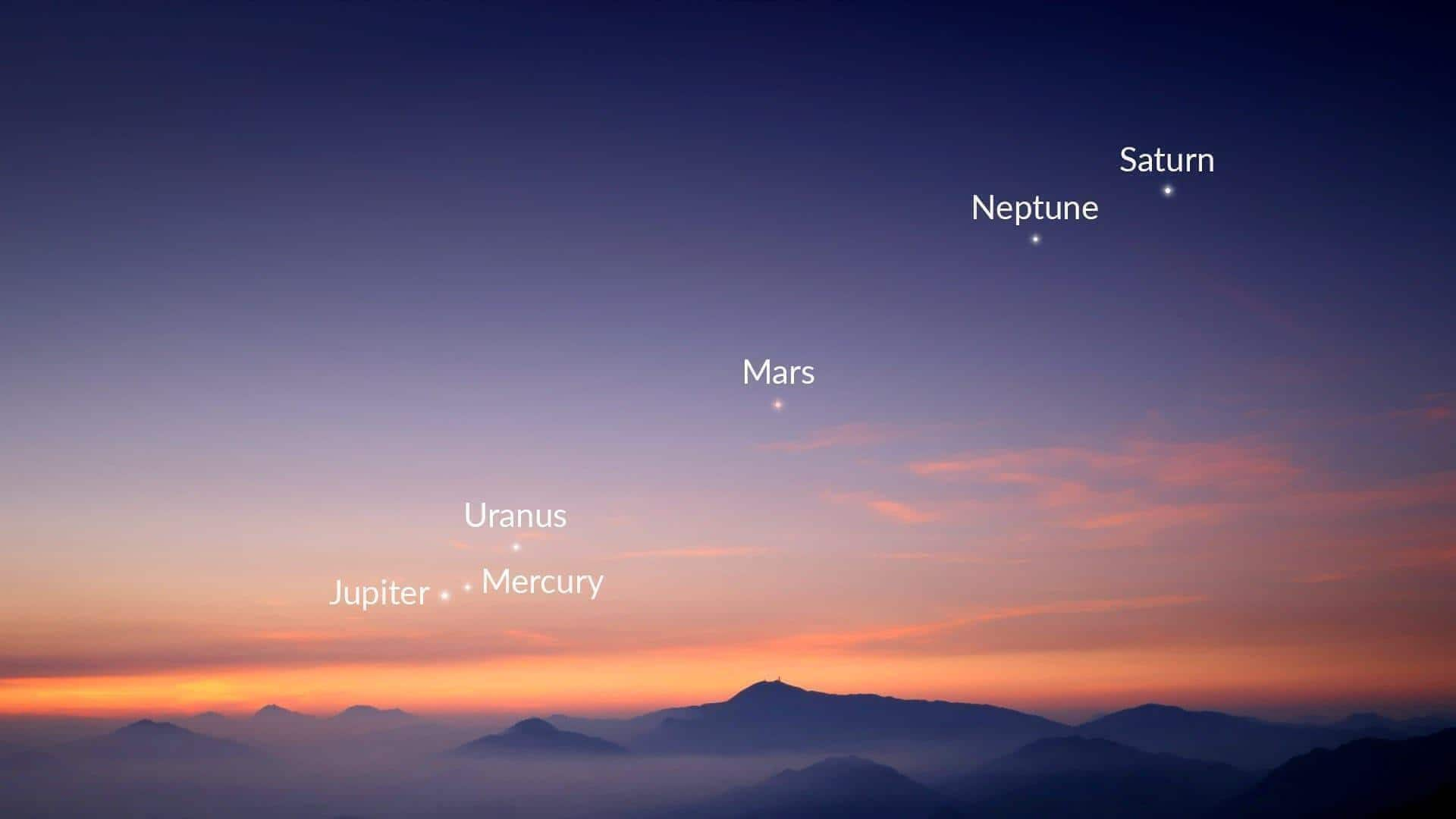
Rare 'planet parade' appears today: Here's how to spot
What's the story
A rare and spectacular celestial event, dubbed the "planet parade," is set to take place on Sunday. The phenomenon will see six planets align in a single area of the sky as viewed from Earth. Venus, Jupiter, Saturn, and Mercury will be visible without any equipment, while Uranus and Neptune will need a telescope or binoculars for viewing.
Viewing tips
Best time to witness the 'planet parade'
The best time to witness this celestial display will be an hour before sunrise. Venus and Jupiter will be the easiest to spot, shining brightly in the eastern sky and separated by about 12 degrees. Saturn will appear in the west-southwest before dawn but fade quickly as the sun rises. The absence of moon during this period will provide darker skies for better visibility.
Mercury visibility
Mercury will be hardest to spot
Mercury, known as the "Swift Planet," will be the hardest to spot in this celestial display. It will appear just above the horizon around 45 minutes before sunrise, shining faintly at a low altitude of less than 10 degrees. Astronomers recommend finding an unobstructed view to the east for best chances of spotting Mercury. According to NASA, it will remain visible until August 26 before slipping into Sun's glare.
Outer planets
Uranus, Neptune require binoculars or telescope
The other two participants in the Planet Parade, Uranus and Neptune, are faint ice giants lying far beyond Saturn's orbit. They will be visible through binoculars or a telescope. Their inclusion completes the six-planet grouping, but casual stargazers will likely only observe the brighter four.
Stellar companions
Prominent stars surrounding planets also visible
Along with the planetary line-up, skywatchers can also spot prominent stars surrounding the planets. The twin stars Castor and Pollux in the Gemini constellation will be visible to the left of Venus and Jupiter. To their lower right, Betelgeuse in Orion will glow reddish with Orion's Belt trio forming a vertical line nearby. These additional markers make for a particularly striking dawn sky for observers in clear weather.
Short-lived display
Next such alignment expected in October 2028
The six-planet arrangement is temporary as Mercury will dip back into the Sun's glare by next week, reducing the visible line-up to just five planets. Such alignments are periodic, with the next significant planet parade expected in October 2028 when five planets will be visible before sunrise. Despite its fleeting nature, this celestial event offers a unique opportunity for skywatchers around the world to witness a rare alignment of multiple planets in our solar system.